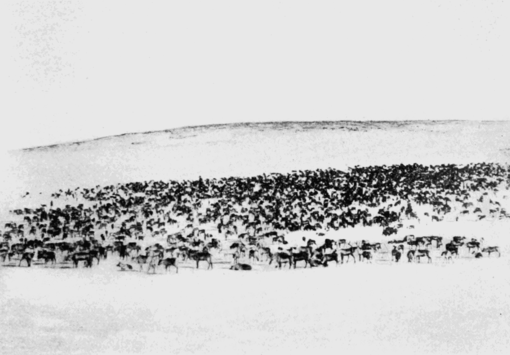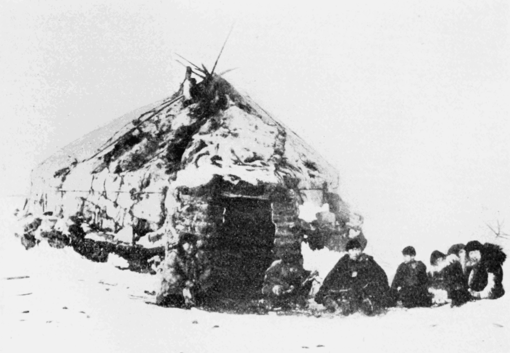Popular Science Monthly/Volume 67/May 1905/The Progress of Science
THE NOBEL PRIZES.
As has already been noted here the Nobel prizes in science have this year been awarded to Lord Rayleigh, Sir William Ramsay and Professor Ivan Pavlov. Each of these men of science has that international reputation which is said to be the best forecast of the verdict of posterity. Lord Rayleigh and Sir William Ramsay are famous for their joint discovery of argon, to which the latter has added helium, neon, krypton and zenon; but each has long been known as a leader in his science. Lord Rayleigh's great work is his 'Theory of Sound'; his collected papers, recently published, cover a wide range of subjects in mathematical physics. He was Maxwell's successor in the chair of experimental physics at Cambridge, now held by Professor J. J. Thomson, but has since 1884 carried on his researches in his private laboratory in his country place in Essex. Lord Rayleigh is one of those who have given distinction to science in Great Britain without holding a professional position, a class unfortunately lacking in this country. Like Darwin and others of this class, he also represents a hereditary interest in science, his brother having done scientific work, and his son having this year been nominated for membership in the Royal Society. Sir William Ramsay, who has recently been knighted, is professor of chemistry in University College, London. Apart from his discovery of new elements and their properties, he has done important work on the molecular surface energy of liquids and in other directions, including improvements in the teaching of chemistry. His recent visit to America has left most pleasant memories. His address on the 'The Present Problems of Inorganic Chemistry,' given at the St. Louis Congress was published in the issue of this journal for November last. Professor J. P. Pavlov is less well known to Americans than Rayleigh and Ramsay, partly because his researches were originally published in a language difficult to read. His important work on digestion with special reference to the control of the nervous system was translated into German in 1898, and by specialists, at least, it is now fully appreciated. He has also made important improvements in technique and discoveries in regard to the formation of urea, the functions of the liver and in other directions. He is professor in the Imperial Institute for Experimental Medicine at St. Petersburg, which is liberally supported by the Russian government.
It will be remembered that Alfred Nobel, who amassed a fortune by the invention of dynamite, bequeathed it to form a trust, which amounts to about $8,000,000, "the interest of which shall be distributed annually as a reward to those who, in the course of the preceding year, shall have rendered the greatest services to humanity. The sum total shall be divided into five equal portions, assigned as follows: (1) To the person having made the most important discovery or invention in the department of physical science. (2) To the person having made the most important discovery or having produced the greatest improvement in chemistry. (3) To the author of the most important discovery in the department of physiology or of medicine. (4) To the author having produced the most notable literary work in the 
Lord Rayleigh.
sense of idealism. (5) To the person having done the most, or the best, in the work of establishing the brotherhood of nations, for the suppression or reduction of standing armies, as well as for the formation and the propaganda of peace conferences."
It appears that the explicit directions of the founder have been violated in at least two ways. Certain local Nobel institutes have been established at Stockholm, on which about a third of the income is spent, and a prize has in no case been awarded to a man for work done or made known 'in the course of the preceding year.' It would be unfortunate to violate a trust of this kind, even though its provisions were unwise; as a matter of fact the instructions of Nobel were better considered than the substitute. Very large prizes, say $50,000 each, for the best scientific work of the year, given often to young men, would more directly stimulate research and would be more useful to the recipients than prizes given for general eminence.
The prizes in the sciences have been awarded as follows:
| Physics. | Chemistry. | Medicine. | |
| 1901. | Rontgen. | Van't Hoff. | Behring. |
| 1902. | Lorentz and Zeeman. | Fischer. | Ross. |
| 1903. | Becquerel, M. and Mme. Curie. | Arrhenius. | Finsen. |
| 1904. | Rayleigh. | Ramsay. | Pavlov. |
The prizes have gone three times to England and to Germany; twice to Holland (though Van't Hoff is now in Berlin); once to France, to Sweden, to Denmark and to Russia.
The Independent raises the question as to-whether America has been neglected, and asks for a vote for five Americans who deserve the prize next year. It must unfortunately be acknowledged that no American deserves the prizes in science on the lines followed by the administrators of the trust. Nobel himself laid special stress on an invention benefiting mankind, and Dr. Bell and Mr. Edison are here preeminent. In pure science Willard Gibbs deserved the prize, but we have now no physicist, chemist or physiologist as eminent as Europeans who could be named. We stand better in some other sciences, and we may hope in work being carried forward by men who may ultimately attain international eminence.
THE JESUP NORTH PACIFIC EXPEDITION.
Mr. Morris K. Jesup, president of the American Museum of Natural History, provided in 1897 means for a thorough ethnological exploration of the northern coast of North America and Asia from British Columbia to the Amur River. The expedition has resulted in valuable accessions to the American Museum and in important ethnological, archeological, linguistic and anthropometric studies, which are now in course of publication in twelve volumes under the editorship of Dr. Franz Boas, of the American Museum and Columbia University. Investigations along the northern coast have been carried out by Messrs. Boas. Farrand, Smith and Teit, and on the Asiatic side by Messrs. Laufer, Fowke, Jochelson and Bogoras.
The memoir last published is an account of the material culture of the Chukchee. the tribes inhabiting the extreme northeastern corner of Siberia, of special interest consequently to those who speculate on the past peopling of the Americas by way of Bering Strait or the future construction of telegraphs and railways through these regions. It also has an adventitious interest just now in view of a possible change in sovereignty. It appears, indeed, that this territory has not been completely
 | ||
| Reindeer Chukchee Young Man. | Eskimo Girl. | |
 | ||
| Maritime Chukchee Woman. | Reindeer Chukchee Woman. | |
subdued, the Russians having withdrawn in 1764, leaving the inhabitants to settle their affairs according to their own customs. Commerce has in part accomplished what force failed to do, though the bulk of the territory remains exempt from any trace of Russianization.
The Chukchee number only about 12,000, of whom about one quarter are maritime and three quarters are reindeer people, while there are about 1.200 Eskimo on the coast. It is not settled as to whether the Chukchee and Eskimo belong to the same stock. Types of Mongolian faces are not uncommon, and at present there is a good deal of admixture. The domestication of reindeer is characteristic of the tribes inhabiting the Asiatic side of Bering Sea, and their economic condition resembles that of the more southerly cattle-breeding tribes. The large size of some of their herds is shown in the illustration. The Chukchee depend on reindeer for clothing and for food; for the covering of their huts and for transportation. Great numbers of these animals are annually slaughtered, Mr. Bogoras having used as many as fifty in one month as food for his dogs. The price of a reindeer is a package of brick tea and a bundle of tobacco, the value of which is together about a dollar. The maritime Chukchee engage principally in fishing and there is a good deal of exchange between them and the reindeer people.
The houses have a wooden frame covered with skins, sometimes protected as shown in the illustration, by sods or stones. The diameter of the hut or tent is from fifteen to twenty-five feet, and there is an inside room usually about 4 ft. 6 in. in height, 7 ft. in breadth and 12 ft. in length. Fifty or more reindeer skins are used to cover one of the huts, and they require a great deal of care. New skins are used in winter and old skins in summer. Fire is used for cooking, but scarcely heats the house beyond the temperature of the outside air. The inner compartment is lighted by a lamp, but is heated chiefly by the bodies of the inhabitants. As the inner room is used not only for sleeping, but also for eating and entertaining, every square foot is occupied.
The maritime Chukchee eat chiefly the meat of sea-mammals, while the others depend on the reindeer. They like raw frozen meat, and do not object to its being putrid. They drink tea and smoke tobacco continually, and use as much alcohol, which may be unrectified and undiluted 95 per cent, spirit, as they can get.
Fly-agaric is the only means of intoxication discovered by the natives of northeastern Asia. It is made from mushrooms and appears to produce effects similar to hasheesh. The sense of smell of the natives is said to be very acute; their color nomenclature is defective, which may be due to defective vision or to lack of interest in colors.
SCIENTIFIC ITEMS.
Senhor Manuel Garcia celebrated his hundredth birthday on March 7 in excellent health. He gave the first performance of Italian opera in New York City in 1825, and was long celebrated as a teacher of singing. His important
contribution to science was the invention of the laryngoscope fifty years ago. Senhor Garcia was presented with a portrait of himself by Mr. John S. Sargent and received a number of congratulatory addresses with decorations from King Edward, Emperor William and the king of Spain.
The first John Fritz gold medal will be conferred upon Lord Kelvin. This medal is awarded by a joint committee of the American Institute of Electical Engineers, the American Society of Mechanical Engineers, The American Society of Civil Engineers and the American Institute of Mining Engineers to the man most representative of, and eminent in, scientific advance in the engineering field.—A medal in commemoration of M. Alfred Cornu will be struck by the French Physical Society.—It is proposed to erect a memorial in Jena to Professor Ernst Abbe in commemoration of his services to optical science and industry.
The first Herbert Spencer lecture, established by Pandit Shyamaji Krishnavarma, M.A., of Balliol College, was given at Oxford on March 9, by Mr. Frederic Harrison, M.A., honorary fellow of Wadham College.—Dr. H. A. Lorentz, professor of physics in the University of Leyden, and Professor V. F. Bjerknes, professor of mathematical physics in the University of Stockholm, will give courses of lectures at Columbia University next year.
Dr. Lewellys F. Barker, professor of anatomy at the University of Chicago, has been called to the chair of medicine in Johns Hopkins University, vacant by the removal of Dr. William Osier to Oxford. At the same time Dr. W. S. Thayer, associate professor of medicine, has been advanced to a professorship of clinical medicine.—Dr. Frank Schlesinger, of the Yerkes Observatory, has been elected director of the New Allegheny Observatory in succession to Dr. F. L. 0. Wadsworth, who has resigned.



